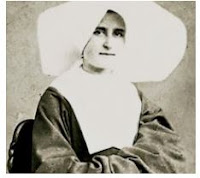Catholic priest wins the 2019 "Best Citizen of India" award Fr. Vineeth George left a secular career to serve God and the Church.
With more than 1.3 billion inhabitants, India is making strides towards overtaking China in the near future as the most populous nation on earth. By way of comparison, the USA has a population of approximately 327 million people—about one third of India’s population, spread over an area roughly three times that of India.
In this sea of souls, the Catholic Church has roughly 17.3 million faithful, less than 2% of the total population. The overwhelming majority Indians are adherents of Hinduism.
Despite this context, it’s not unprecedented that great Catholic apostles receive wide recognition; just think of Mother Teresa of Calcutta. This year, another representative of the Catholic Church is being honored for his dedicated service to people in need there: Fr. Vineeth George.
On April 16, International Publishing House, which specializes in biographical publications, granted the
"Best Citizen of India" award to Fr. George, a 38-year-old Catholic priest.
The member of the Claretian religious community is being recognized specifically for his pastoral work with marginalized people in northern India.
Fr. George was born in Hyderabad, and studied at Loyola Academy, a Jesuit school. In an interview with Asia News, he said,
My vocation is a gift, born during my childhood. I have always thought of having to use the talents that God has given me for the Church.
A graduate of Jain University in Bangalore, he continued his studies at the Matrusri Institute of Post Graduate Studies, and then held a variety of jobs, working at different times for Dell Computer Corporation, General Electric, the Deccan Chronicle (as sub-editor), and the Ministry of Energy of the Indian government.
Despite his excellent career, he was unsatisfied. Faithful to his childhood desire to serve God, he left everything behind, and joined the seminary, being ordained in January 2014. In the Asia News article, he says:
"Thank God, in 2006, even as a seminarian, I was chosen by my superiors to start lecturing Management at St. Claret College. A year after my ordination, I was appointed as vice principal of the same college and I kept that role until December 2018. Since January this year I have been pursu-ing a PhD in Organizational Behavior as a research scholar at the Indian Institute of Technology in Hyderabad, one of the most sought after institutes of higher learning in all of India."
In his service to those in need, Fr. Vineeth has also worked as a professor at a vocational training centre in a remote part of the archdiocese of Delhi. There, his mere presence was a form of evangelization. "The school is located in an area inhabited only by Hindus, where there is no Christian presence," he explains. "The centre welcomes 30 boys and girls who have dropped out of school; the girls pursued sewing and beautician courses; the boys pursued electrician and plumbing courses."
Since his ordination, while working on his doctorate, he has been also been involved in parish work. "My first assignment was in the Garhwa district, in the state of Jharkhand," he told Asia News. "I was the assistant parish priest of the church of St. Peter, in the diocese of Daltonganj. There I was also engaged in teaching English to the tribal children who attend the school adjacent to the parish."
Currently, besides his other activities, he is involved in pastoral activities in the Archdiocese of Hyderabad and in the Diocese of Shamshabad.
Fr. Vineeth George is being publicly recognized, but this award should remind us of the countless priests, religious men and women, and lay missionaries around the world who are giving the best of themselves to help those in need, in many different ways. May their example inspire us all to serve our fellow human beings, especially those most in need, according to our own vocation and opportunities.
Aleteia | May 07, 2019
**************************



